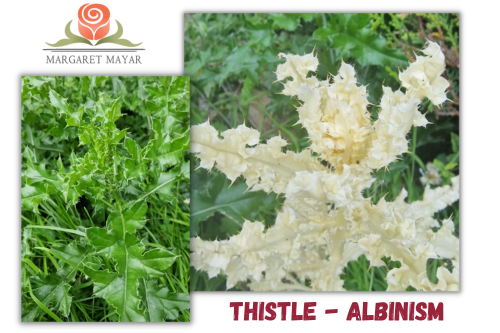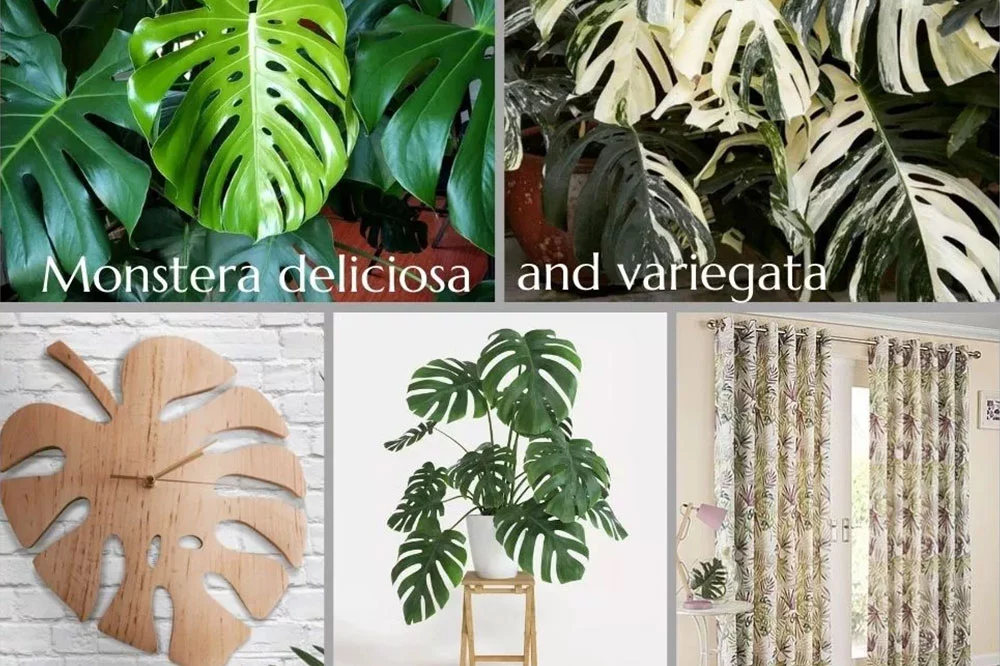Swiss Cheese plant – Monstera – to niezwykle efektowna roślina doniczkowa, która w ostatnim czasie wiodzie prym w popularności kwiatów. Nic dziwnego! Jej piękne, duże i lśniące liście dodają wnętrzu charakteru, skutecznie zazieleniając mieszkania, domy i biura. Swiss Cheese plant – Monstera dziurawa (Latin Monstera deliciosa) – bo tak brzmi jej pełna nazwa – jest rośliną dość łatwą w uprawie, pod warunkiem spełnienia kilku podstawowych czynników. Ale wcześniej porozmawiajmy trochę więcej o samej roślinie.
Skąd wzięliśmy Monsterę Dziurawą?
Patrząc na nasze niedawno zakupione okazy mieszkalne, trudno uwierzyć, że Monstera jest z natury bardzo energicznym pnączem występującym w południowoamerykańskich lasach równikowych. Dziko rosnąca Monstera wspina się po drzewach niektórych lasów tropikalnych lub rozprzestrzenia się po zboczach. Z tego powodu nieodłącznym elementem w uprawie Monstery jest rama lub mocna podpora. W pewnym momencie konieczne staje się doczepienie i ukierunkowanie pędów rośliny, aby okiełznać jej naturalne instynkty i uzyskać bardziej „mieszkalną” formę.
Dlaczego roślina potrzebuje tych wszystkich dziur w liściach? Takie jest jej piękno! Ale co ciekawsze, to nie tylko walor dekoracyjny. Proste wyjaśnienie takiego kształtu liścia zależy od jego pochodzenia. Dziury w liściach to przystosowanie rośliny do jej naturalnych warunków obfitujących w silne wiatry. Dzięki liściom, które są cięte i perforowane jak ser szwajcarski, roślina jest mniej podatna na uszkodzenia mechaniczne, jakie może wywołać wiatr. A jak możesz nie być pod wrażeniem mądrości tych zielonych stworzeń?
Monstera – o co dokładnie chodzi?
Obecny trend „Urban Jungle” stał się niezwykle popularny, nawet wśród osób, które uważały, że nie mają ręki do kwiatów. Moda na wszechobecną zieleń przeżywa teraz swój renesans, a obecne trendy okrzyknęły potwora rośliną, którą po prostu musisz mieć w swojej kolekcji roślin! Rozszerzenie jest na pełnych obrotach – dlatego wszędzie widać jego popularność! W mieszkaniach, miejscach publicznych, restauracjach itp. Nawet przedmioty użytkowe zdominowały wzory z motywem liścia Monstery. Zapewne więc cała ekscytacja może dotyczyć tych oryginalnych, fotogenicznych i niezwykle dekoracyjnych liści. Choć Monstera cieszyła się w Polsce świetnością w latach 70., na jakiś czas zniknęła z podium na rzecz innych roślin. Dziś na nowo odkrywamy jej piękno, a roślina przeżywa drugą młodość, będąc inspiracją dla wielu projektantów i artystów. Na szczęście zarówno dla miłośników roślin, jak i samej rośliny jej uprawa nie jest skomplikowana. Można powiedzieć, że rośnie sam z siebie i może rosnąć! I w ten sposób w końcu doszliśmy do sedna…
Jakie warunki powinna zapewnić Monstera?
Jesteśmy szczęśliwymi właścicielami tej pięknej i modnej rośliny i co dalej!? Monstera będzie wszędzie! Warto uświadomić sobie, że zanim spojrzymy wstecz, nasz dorosły potwór przejmie nie tylko nasze serce, ale i nasze mieszkanie. Jeśli nie przeraża Cię wizja transportu do kuchni lub łazienki na wiszących lianach, możesz iść dalej i sprawdzić, co zrobić, aby jak najdłużej przetrwała w naszej „miejskiej dżungli”.
Miejsce – jakie miejsce lubi Monstera?
Monstera bardzo dobrze sprawdza się w zacienionych miejscach, dzięki czemu doskonale sprawdza się w pomieszczeniach o małej ilości światła słonecznego, takich jak korytarze. Nienawidzi bezpośredniego światła słonecznego, dlatego najlepiej rośnie na jasnym stanowisku, ale z dala od okna. Zbyt ostre słońce powoduje przypalanie liści, podczas gdy zbyt mało światła pojawia się na małych liściach bez wgnieceń. Wymaga luźnego podłoża z dostępem powietrza, dlatego odpowiednia warstwa drenażu jest niezwykle ważna w uprawie Monstery. Pamiętajmy też, że Monstera – jak sama nazwa wskazuje, a przypomnimy Wam na każdym kroku, potrafi osiągać dość monstrualne rozmiary, więc aby móc swobodnie rosnąć, potrzebuje „trochę” swojej przestrzeni.
Podlewanie – jak podlewać Monsterę?
W okresie wzrostu roślinę należy podlewać umiarkowanie. Umiarkowany to mniej więcej to samo, co „spokojnie! Podlewaj mnie tylko wtedy, gdy gleba jest sucha po podlaniu. Dokładniej wygląda to tak:
W okresie wegetacji od maja do października podlewamy raz, maksymalnie dwa razy w tygodniu.
W czasie odpoczynku, czyli od listopada do kwietnia, raz na trzy tygodnie.
Wodę należy spuszczać, a nie prosto z kranu. Wystarczy kilka godzin, aby woda z kranu się wyróżniła
Ponadto liście dziurawej Monstery uwielbiają częste zraszanie miękką wodą. Bardzo ważne jest, aby używać miękkiej wody. W przeciwnym razie na zielonych, pięknych liściach Monstery będziemy mieli białe, brzydkie plamy z wody stojącej.
Temperatura odpowiednia dla Monstery
Najlepsza temperatura dla Monstery to 18-24 ° C, ale wytrzyma również niższą temperaturę (15 ° C), chociaż jej wzrost będzie wtedy wolniejszy.
Nawożenie Monstery
Och, Monstera lubi jeść! Znana ze swojej żarłoczności prawdopodobnie byłaby w stanie przyjąć każdą dawkę nawozu, ale w tej kwestii najlepiej jest zachować umiar i karmić ją zgodnie z instrukcją na opakowaniu. Płynny nawóz do roślin zielonych będzie odpowiedni dla Monstery m.in. Agrecol Mineral Gel na rośliny zielone lub na rośliny doniczkowe aplikowany co 2-3 tygodnie.
https://www.margaretmayar.com/shop/fertilizer-for-potted-green-flowers-beautiful-leaves-mineral-gel-250ml/
Jak powinny wyglądać zdrowe liście Monstery?
Zdrowe liście Monstery są zielone, skórzaste i błyszczące. Młode liście mają kształt serca i nie mają wcięć i dziur charakterystycznych dla Monstery, ale nie martw się – im starsze liście, tym głębsze są wgłębienia i dziury. Oczywiście pod warunkiem, że roślina rośnie w odpowiednich warunkach. Jak przystało na “Monsterę” – liście mogą osiągnąć nawet 60 cm średnicy! To kolejne miejsce w tym artykule, w którym nadszedł czas, aby porzucić złudzenia, że to niemożliwe, aby ten mały kwiatek przywieziony z kwiaciarni mógł być takim gigantem!
Na podstawie liści możemy bardzo szybko ocenić, co robimy źle w jej uprawie:
Jeśli liście bledną i palą się, roślina rośnie w zbyt dużym nasłonecznieniu.
Jeśli liście żółkną, a potem brązowieją – prawdopodobnie przesadziliśmy z podlewaniem.
Jeśli na liściach są ciemne plamy – temperatura w pomieszczeniu jest zbyt niska lub roślina stoi w przeciągu.
Powierzchnia liścia Monstery jest duża i bardzo szybko zbiera kurz. Musimy pamiętać o regularnej pielęgnacji liści monstery, ponieważ zakurzony liść nie wygląda dekoracyjnie i nie funkcjonuje prawidłowo z powodu kurzu. Najlepiej od czasu do czasu przetrzeć liście wilgotną szmatką.
Musisz też wiedzieć, że Monster, podobnie jak inne kwiaty doniczkowe, lubi szkodniki. Najczęściej na Monsterze znajdziemy wełnowce, przędziorki i wciornastki. Po zauważeniu drobnych szkodników należy natychmiast zareagować odpowiednim preparatem lub zasięgnąć porady specjalisty. Rosnąca populacja szkodników może uniemożliwić przetrwanie naszego ukochanego kwiatu.
Korzenie Monstery wyszły na wierzch! Co z nimi zrobić?
Nic! Jest to bardzo charakterystyczne dla Monstery – zdrowa roślina tworzy wiele korzeni powietrznych, których nie należy odcinać, jeśli nie chcemy zaszkodzić roślinie. Korzenie powietrzne w środowisku naturalnym służą do wspinaczki, ale pełnią również funkcję odżywczą – czerpiąc wodę z powietrza.
Dlaczego moja Monstera płacze?
Twoja Monstera płacze, twoje sumienie jest czyste, a ty nadal nie masz pojęcia, co zrobiłeś źle? Nie zaszkodzi przeprosić za wszystko, uściskać i powiedzieć kilka miłych słów. I poważnie, nie będzie bardzo zraniona. Wyjaśniamy już, dlaczego tak się dzieje:
Pojawianie się kropli na liściach Monstery jest bardzo naturalnym zjawiskiem zwanym GUTACJĄ. Gutacja najczęściej występuje przy dużej wilgotności powietrza. Wówczas występują warunki sprzyjające roślinom do pobierania wody (także przez korzenie powietrzne), ale niekorzystne dla transpiracji, czyli parowania. W ten sposób roślina radzi sobie z regulacją wody. A że takie warunki często panują w mokre, deszczowe dni, nasze babcie mawiały, że Monstera potrafi przewidzieć pogodę wołając „o deszcz”. To nasza ozdoba i pogodynka w jednym.
W ten sposób prawdopodobnie już wiesz wszystko, co musisz wiedzieć o tym, „jak dbać o Monsterę” i jakie niespodzianki mogą ci się przydarzyć podczas procesu kultywacji. Zaadoptuj i skutecznie wychowaj swojego zielonego potwora. Mamy nadzieję, że Twoja miłość przetrwa wiele lat. Oczywiście z wzajemnością.
































